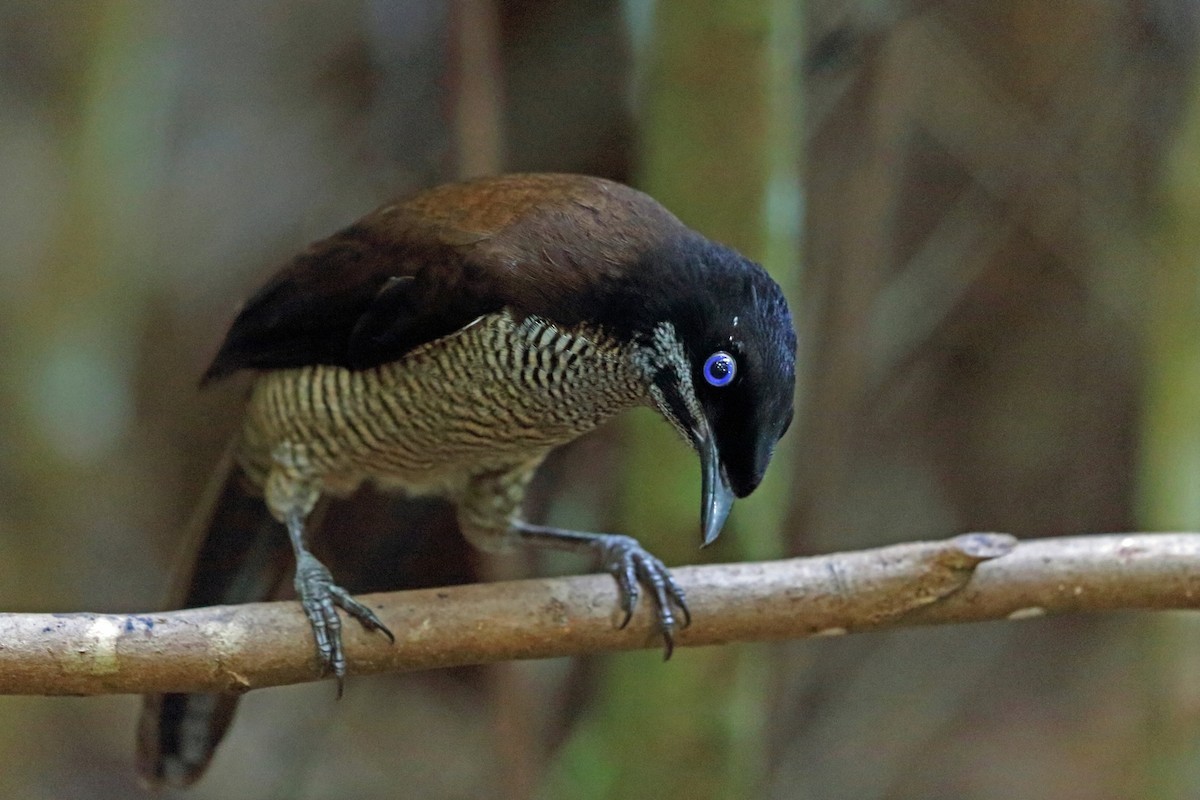Western Parotia
A species of Six-wired birds-of-paradise Scientific name : Parotia sefilata Genus : Six-wired birds-of-paradise
Western Parotia, A species of Six-wired birds-of-paradise
Botanical name: Parotia sefilata
Genus: Six-wired birds-of-paradise
Content
Description General Info
 Photo By Nigel Voaden
Photo By Nigel Voaden Description
Like other birds-of-paradise, the western parotia is sexually dimorphic. The male has jet black plumage, with striking iridescent scale-like, golden-green breast shields and triangular silver feathers on its crown. The occipital plumes (or head wires) arise from above and behind the eyes, with three long, erectile wire-like plumes with smaller spatulate tips, above and behind each eye. As with most member in the family, the female is unadorned and has brown plumage. The species is similar to Lawes's parotia (Parotia lawesii). 
Size
30 - 33 cm
Nest Placement
Tree
Feeding Habits
Western Parotia consume both fruits and arthropods, with unclear preference. They probe bark and epiphytes for arthropods and may forage in mixed-species groups.
Habitat
The western Parotia is typically found in middle montane forests and well-developed secondary forests rich in small saplings. These birds inhabit regions with dense vegetative growth that offer both food resources and opportunities for their elaborate courtship displays.
Dite type
Frugivorous
General Info
Feeding Habits
Bird food type

Fruit
Behavior
The species is polygynous. Males presumably perform a series of courtship displays on terrestrial courts in exploded leks. In courtship display, the male performs a ballerina-like dance with its elongated black plumes spread around skirt-like, right below the iridescent breast shield. During the spectacular dance, he shakes his head and neck rapidly to show the brilliance of his inverted silver triangle-shaped head adornment to attending females. The nest is built and attended by the female alone; breeding season is largely unknown. The diet consists mainly of fruits such as figs, and arthropods. 
Distribution Area
The western parotia is found only in the mountain forests of Vogelkop and the Wandammen Peninsula of Western New Guinea. 
Species Status
A widespread and common species throughout its range, the western parotia is evaluated as Least Concern on the IUCN Red List of Threatened Species. It is listed on Appendix II of CITES. 

 Photo By Nigel Voaden
Photo By Nigel Voaden